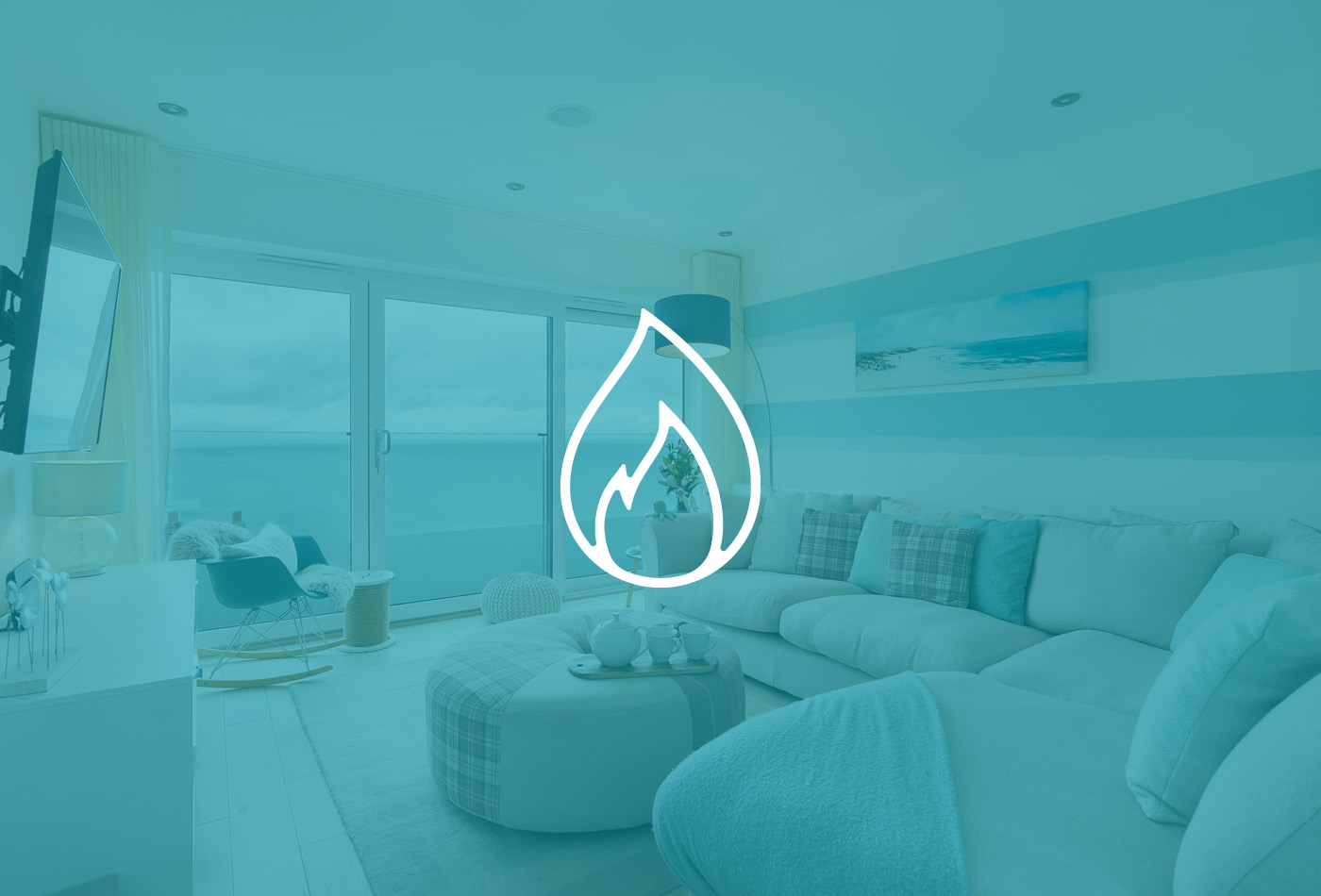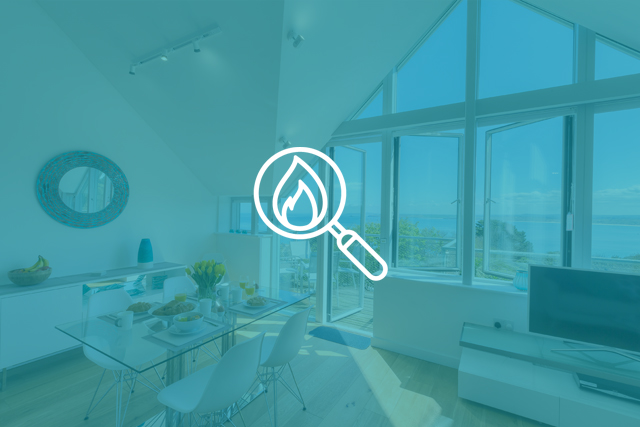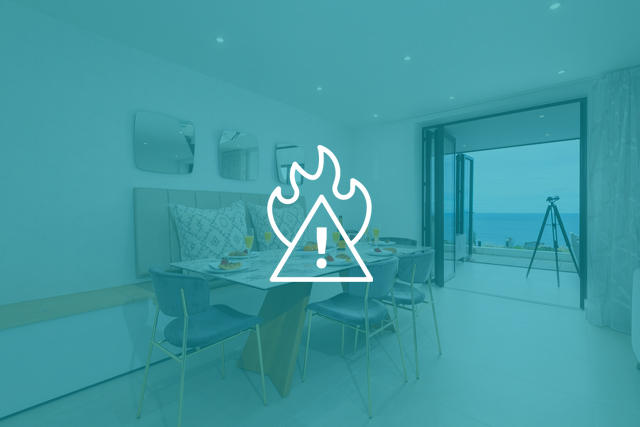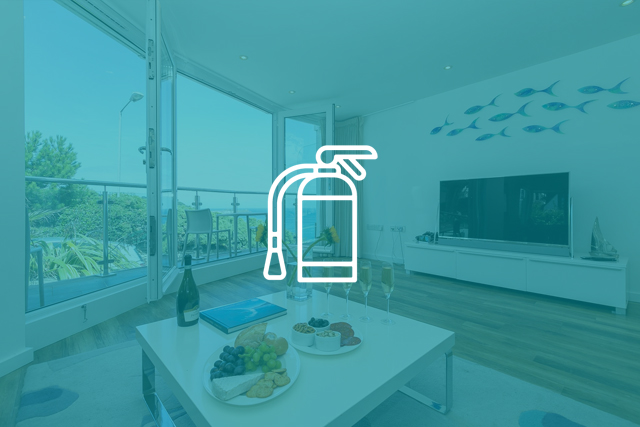Choosing Holiday Letting Agents in St Ives
Looking for tips on choosing the right St Ives holiday letting agents for your needs? Read our guide to...

Ensuring the safety of your guests is an important part of being a self-catering accommodation owner. It’s vital for owners to stay up to date with guidance, ensure their properties are compliant with legal requirements, and guarantee the safety of their guests.
The UK Government has issued new guidance for ‘Small Holiday Lets,’ effective from 1st October 2023. This blog goes into the key aspects to help ensure your holiday let meets the required safety standards.
Click on the quick links below to learn about a specific topic, or continue reading our full guide to understand what the fire safety regulations mean for you.
We’ve explained the new fire safety regulations in the sections below. Remember, this is just a brief overview of the new guidance, and you shouldn’t depend upon it when making your holiday property fire-safe. Please read the full Government guide to make sure your accommodation is safe and compliant.

Those who own a small holiday let must carry out, and act on, a fire risk assessment of their accommodation. For this you’ll have to inspect your property to identify any fire hazards, put measures in place to prevent fires breaking out, and take precautions to protect those in your holiday let in the event of a fire. This doesn’t just mean guests – you should also consider staff and anyone else who uses your property.
Can I do my own fire risk assessment?
The Government guidance says that for small accommodations, fire risk assessments ‘can be completed, in most cases, without specialist knowledge’ by referring to the guide. The guidance also has a useful risk assessment template included.However, if you’re not confident doing it independently, it’s a good idea to seek assistance from a specialised fire risk assessor. The Fire Sector Federation publishes guidance on choosing a competent fire risk assessor.It’s important to remember that you’re ultimately responsible for the safety of your own property. This means you must satisfy yourself that the measures you have put in place are adequate and justifiable. You should therefore ensure that any advice you receive is of sufficient quality.

Your risk assessment should list all of the fire hazards within your property and either remove them or take actions to reduce the level of risk they cause. We’ve listed some examples of hazards set out in the Government guidance below:
Electricals are a common cause of fire, so it’s crucial to regularly inspect equipment in line with regulations, like an Electrical Installation Condition Report (EICR). There’s more information on this in the Government’s Holiday Let Fire Safety guide, and more specific electrical safety guidance on the Government website.
Smoking is a serious fire hazard and the most common cause of fatalities from domestic fires. Although it’s not illegal for guests to smoke in private spaces like bedrooms, the safest bet is not to allow smoking throughout your holiday property. If this is the route you’re taking, there should be signs in your property to make it clear that guests aren’t allowed to smoke. At Carbis Bay Holidays, we do not allow guests to smoke in the self-catering properties we let, and this is stated in our listings.
The prospect of arson in your holiday let is a frightening one, but it’s still important to consider. You should ensure a good level of security to prevent unauthorised access and remove refuse and rubbish bins away from the property, especially windows, to prevent fire spreading from outside.
Heating systems should have maintenance checks carried out annually, by a qualified contractor. You should avoid using portable heaters as these pose a significant risk. If you must use them, make sure they’re placed away from combustible materials and fire escape routes. Some types of heater are known to be dangerous and shouldn’t be used at all – these are described in the Government guidance PDF, along with a list of considerations for those with log burners.
As a source of heat, cooking equipment is naturally a fire hazard. Luckily for holiday home owners, there are several measures which can be taken to make ovens and cooking equipment safer, which are listed in the guidance document. These measures depend on the type of oven you have, but all cooking equipment requires regular maintenance and cleaning to reduce fire risk.
We know candles can create a cosy ambience for guests, but they do pose a significant fire risk. You shouldn’t provide candles for guests, and it’s a good idea to suggest they don’t use candles of their own.
Good housekeeping is important for the presentation of your holiday property, but it’s also a key factor in keeping your accommodation safe. All refuse should be removed regularly, and combustible materials need to be kept away from any ignition sources. Escape routes must be kept clear of rubbish or storage so guests can leave as quickly as possible when they need to.
All furniture and furnishings need to comply with the Furniture and Furnishings Fire Safety Regulations 1988.
Many fires are caused during the work of contractors and tradespeople. It’s essential to make sure all contractors are suitably qualified and that, when hot work is carried out, the correct safety measures are taken.
Dangerous substances need to be stored in the correct way. Barbecues or fire pits should be placed a safe distance away from the accommodation, and never on a balcony. Gas for barbecues should always be used according to manufacturer’s instructions and these instructions should be provided for guests.

It’s a legal requirement to have fire escape routes in your accommodation to allow people to escape as quickly and safely as possible. It’s important to consider who will be using your property, including elderly people, those with disabilities, or children, and ensure the route is suitable for them. Escape routes should have walls and doors which are fire safe to reduce spread of fire onto the route. There’s more information about this in the Government guide.
In the event of a fire, your escape route must be well lit so guests can easily find a way out with minimal risk. You should consider lighting in the event that your electrical supply fails, whether it’s relying on street lighting outside or providing additional lighting which doesn’t rely on the property’s circuitry. This could range from night lights and easily accessible torches to specialist emergency lighting.
Escape signs are not essential for small properties where escape routes are clear to anyone using the property. For example, in a shepherd’s hut with only one walkway, it’s obvious how to escape. On the other hand, larger properties are likely to need signage which points guests in the right direction in the event of a fire.
Guest’s greatest priority should be escaping accommodation safely, so they shouldn’t be expected to use fire fighting equipment. However, where staff are likely to be present, appropriate equipment should be supplied. It’s important to keep equipment maintained and provide instructions for use in line with guidance.
Although guests aren’t expected to use fire-fighting equipment, it’s not a bad idea to supply a small multi-purpose fire extinguisher and/or fire blanket in the kitchen area, where fires are likely to break out.
Suitable multi-purpose extinguishers, guaranteed for five years, can be bought from most larger DIY outlets. The gauge should be checked regularly to ensure the ‘stored pressure’ is correct. Low maintenance 10-year extinguishers are also available. Powder fire extinguishers should not be used, as these aren’t suitable for enclosed spaces.
You should have smoke alarms fitted in all bedrooms and common areas. You can also choose to use heat alarms in kitchens and other areas where smoke from cooking may cause a false alarm. There should also be a smoke alarm in your roof space if there are combustible materials here. Smoke and heat alarms should be interlinked so they sound simultaneously when a fire is detected.
Most guests are unlikely to be familiar with your property’s layout. For this reason, you should supply a simple escape drawing to make sure they know where to go if a fire breaks out.
Once you’ve implemented your fire safety measures, it’s essential to carry out regular testing and maintenance – a great fire safety plan is useless if it no longer works in real circumstances. There’s a comprehensive list of the tests you need to carry out in the Government guidance document.
These aren’t mentioned in the Government’s new guidance but are essential for keeping people safe in your holiday accommodation. It’s a legal requirement that carbon monoxide detectors are fitted in any room where solid fuel is burned, for example by a log burner or open fire.
It’s also advisable to have them in any room with a gas appliance, such as a gas boiler or oven, as Carbon Monoxide can be created by faulty gas appliances.
The guidance applies to holiday accommodations sleeping less than 10 people, with no more than 4 bedrooms on the first floor. This includes all accommodation types, including cottages, chalets, caravans and glamping pods.
It only covers accommodations on either the ground floor or the ground and first floor, meaning properties with more than 2 levels aren’t addressed by this guidance. If your holiday let has more than 2 floors, it should adhere to the Government guidance on premises with paying guest sleeping accommodation.
Owners who use Carbis Bay Holidays can rest assured that we’ll provide them with guides to property safety and legal regulations. We’ll also be happy to suggest professional fire risk assessors to help you carry out your risk assessment.
Although we can’t advise you on, and aren’t responsible for, fire safety at your property, we hope that by doing these things we’re starting you off on the right foot. You can then read into the matter further and seek your own advice as and when you feel it’s needed.
To learn more about letting your property through Carbis Bay Holidays, call us on 01736 630015, email newowners@carbisbayholidays.co.uk, or visit our website.
As a holiday letting owner you are responsible for compliance with health & safety laws, regulations and guidance, and for having suitable insurances in place (not Sykes Holiday Cottages or its brands (Sykes)). From time to time, Sykes shares information with you on the topic of health and safety and insurance. When it does so, it is not providing you with advice (legal, financial, tax or otherwise); please seek your own as you see fit. In addition, it is not making any representations or warranties about the information being complete or free from errors or inaccuracies. Sykes shall not be liable for any loss or damage arising under or in connection with your reliance on it.